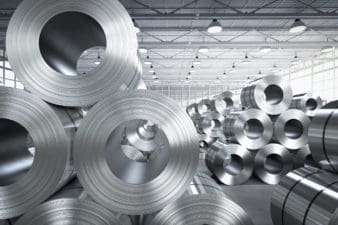Stingray Group (TSX:RAY.A) announced that the Toronto Stock Exchange (TSX) approved a share-repurchase program of up to 2,924,220 subordinate voting shares and variable subordinate voting shares. The buyback program commenced on August 16, 2019 and may continue until August 15, 2020.
Share-repurchase agreements can either be a good or a bad sign, depending on the circumstances. On the one hand, if total dividend payout remains the same, investors receive a larger annual dividend. Nevertheless, share buybacks can also hide problem areas in a company’s balance sheet.
Three reasons stocks initiate buybacks
- The share price is undervalued
- Earnings per share (EPS) appear to be too low
- To augment return on assets and equity
It may be the case that management feels that above-industry-average shares outstanding dwarf the company’s return on assets and equity compared to competitors. In this case, the stock may want to seek approval from the listed exchange to engage in a share-repurchase program.
Stock buybacks will increase shareholder value on a per-share basis. If demand for a stock isn’t strong enough, a company might want reduce the supply of shares on the market to increase the share price. Because fewer shares are sold but returns stay the same, returns per share should increase.
If the company is struggling to grow net income, a share-repurchase program may hide the problem from less experienced investors. This may be the case with the Stingray Group, which reported a large negative loss for its last fiscal year.
Does Stingray Group have something to hide?
Stingray Group has a diluted EPS of a low negative $0.06. EPS is calculated by subtracting preferred dividends net income and dividing by the weighted average common shares outstanding.
Stingray last reported a negative annual net income of $11.99 million. It is difficult to hide a negative net income in EPS because any decrease in shares outstanding will increase the deficit per share. In other words, Stingray can’t hide negative earnings by reducing total shares outstanding.
Dividends per share currently stand at $0.065 per share. A buyback of almost three million shares amounts to $190,074.30 in dividends every quarter, or $760,297.20 annually. If Stingray plans to keep dividend issuance constant post-buyback, the reduction in preferred dividend payouts will not boost the company’s EPS by much.
Nevertheless, Stingray has a positive return on assets of 5.33%. The share repurchase may reduce the total assets of the company. The company may be able to augment its return on assets to make it look like its cash flow on assets is growing more quickly.
Foolish takeaway
Stingray Group may realize that its most recent fiscal year poor performance is a negative shock to shareholders. A share buyback tends to increase shareholder confidence that the company is in good financial status. Essentially, a stock wouldn’t be able to repurchase shares if it didn’t have enough cash to do so. This tends to be a positive sign for investors.
TFSA investors should be wary of buybacks and always try to see if the share repurchase is to hide falling income or a true demonstration of market power.







